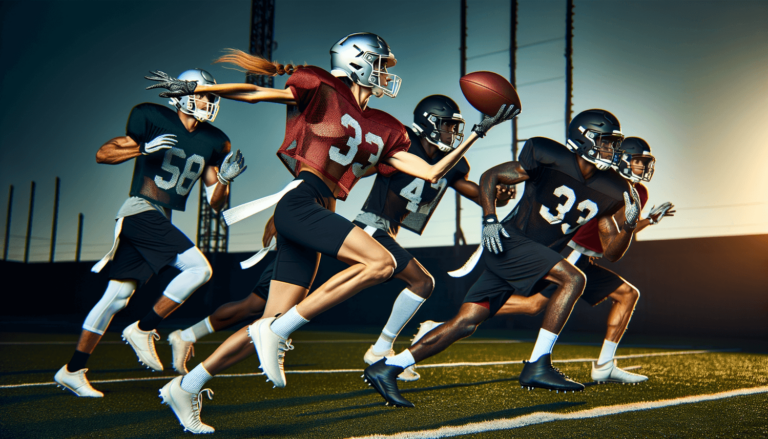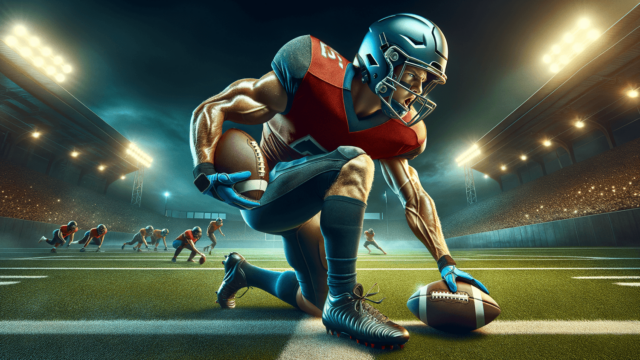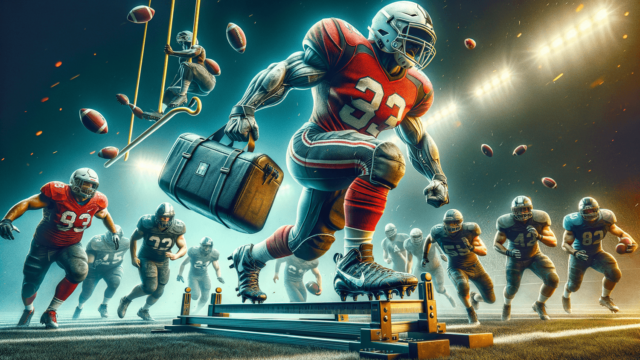
To wear to football practice, opt for comfortable athletic clothing like a moisture-wicking shirt, breathable shorts or pants, supportive undergarments, protective gear such as a helmet and shoulder pads, as well as football cleats and socks for optimal performance and safety.
Essential Football Practice Attire
Knowing what to wear to football practice is crucial for player comfort, safety, and performance. The following items should be part of every player’s outfit during practice:
1. Moisture-Wicking Shirt
Choose a shirt made from moisture-wicking fabric to help regulate body temperature and keep you dry during practice. Materials such as polyester, spandex, or a combination of both are most suitable for this purpose.
2. Breathable Shorts or Pants
Opt for lightweight, quick-drying shorts or pants that allow freedom of movement and airflow. Synthetic fabrics or specialized sportswear materials are suitable choices for this type of clothing.
3. Supportive Undergarments
Wearing supportive undergarments, such as compression shorts, athletic supporters, or sports bras, is essential for player comfort. These provide added support and stability to reduce the risk of injury while training.
Protective Gear for Football Practice
Football is a high-contact sport, which makes wearing protective gear during practices paramount. The following items will help ensure player safety:
1. Helmet
A well-fitted football helmet is essential for protecting the head from impact during practice. Ensure that the helmet is certified by organizations like NOCSAE and follow the manufacturer’s guidelines for proper fitting and care.
2. Shoulder Pads
Football shoulder pads provide critical protection to the upper body during practice. Ensure they are the appropriate size, style, and level of protection for your position on the field.
3. Additional Protective Gear
Aside from helmets and shoulder pads, other protective gear includes mouthguards, thigh and knee pads, and football gloves. Each of these items plays a vital role in safeguarding against injuries and enhancing your overall performance during practice.
Footwear for Football Practice
Proper footwear is crucial for increasing traction on the field and minimizing the risk of injury. Here are the required components for optimal footwear:
1. Football Cleats
Football cleats, whether molded or detachable, provide essential traction and stability during practice. Choose cleats tailored to your position and playing surface (natural grass, artificial turf, or indoors).
2. Socks
High-quality, moisture-wicking socks are vital in preventing blisters and increasing overall foot comfort during practice. Opt for tall athletic socks designed specifically for football to provide optimal support and coverage.
Layering for Weather Conditions
Adapting to different weather conditions is vital for staying comfortable during football practice. Understanding how to layer clothing for various temperatures and conditions can greatly enhance your experience on the field.
1. Cold Weather Layering
In cold weather, wear moisture-wicking thermal or compression base layers to retain heat without adding bulk. Insulating mid-layers, such as fleece jackets or sweatshirts, can be added for extra warmth. Lastly, wear a water and wind-resistant outer layer to protect against the elements.
2. Warm Weather Layering
For warm weather practices, focus on lightweight, moisture-wicking attire, ensuring that your shirt, shorts or pants, and undergarments provide maximum breathability. Add a hat and apply sunscreen for added sun protection.
3. Rainy Weather Layering
During rainy conditions, wear a waterproof, lightweight raincoat or jacket as your outer layer, ideally with breathable fabric to prevent overheating. Waterproof shoe covers can be used to keep your feet dry during practice.
Adhering to Team Guidelines and Regulations
Make sure you follow any specific team guidelines or regulations regarding practice attire. Some teams may have unique practice jersey requirements, while others may mandate specific cleats, equipment, or colors. Familiarize yourself with these requirements to ensure you are appropriately dressed for practice.
Maintaining Your Football Practice Gear
Proper care of your football practice gear is essential for longevity and hygiene. By cleaning and maintaining your gear regularly, you can ensure it performs at its best and lasts longer.
1. Washing Practice Apparel
Frequent laundering of your shirts, shorts, and undergarments is crucial for keeping them fresh and odor-free. Follow the garment’s care instructions, using mild detergent and a cold wash cycle. Air-dry or tumble-dry on low to avoid shrinkage and damage from excessive heat.
2. Cleaning and Deodorizing Football Gear
Regular cleaning of protective gear like helmets and shoulder pads is essential for health reasons and prolonging their lifespan. Wipe down the equipment with a damp cloth after each usage and use disinfecting wipes or sprays to sanitize and deodorize them as needed.
3. Inspecting and Repairing Equipment
Conduct frequent inspections of your protective gear, footwear, and other equipment for signs of wear or damage. Promptly repair or replace any items that show signs of weakness or excessive wear to minimize the risk of injury during practice.
FAQ Section: Football Practice Attire and Gear
Here are common questions and answers related to football practice attire and gear to help further clarify what to wear and how to maintain it for optimal performance and safety on the field.
What are the best materials for football shirts and shorts?
The best materials for football shirts and shorts are moisture-wicking and breathable fabrics like polyester, spandex, or a combination of both. These materials keep you dry and comfortable during practice while also promoting airflow.
Can I practice without wearing a helmet and shoulder pads?
It is highly recommended to always wear a helmet and shoulder pads during football practice to protect yourself from injuries. Football is a high-contact sport, and wearing the proper protective gear is crucial for player safety.
How do I know if my helmet and shoulder pads fit correctly?
A well-fitted helmet and shoulder pads should feel snug without causing discomfort or restricting movement. The helmet should cover the forehead, and the chinstrap should be tight enough to hold it in place during contact. Shoulder pads should cover the entire shoulder area, with the straps adjusted for a secure fit. Consult the manufacturer’s guidelines and your coaching staff for assistance.
How often should I replace my football cleats?
The frequency of replacing football cleats varies based on factors like usage, playing surface, and the cleats’ condition. Generally, you may need to replace them every season or when showing significant wear, such as deteriorating cleat studs, damaged upper materials, or an unstable fit. Regularly inspect your cleats for signs of wear and tear.
Can I wear the same clothes I use for football practice during games?
While some items, such as undergarments and protective gear, can be worn during both practice and games, teams typically have specific uniforms for game days, and practice jerseys may not be suitable. Consult your team’s guidelines and always ensure you have separate, clean clothes for games.
Featured Posts
- No pillar pages found.





